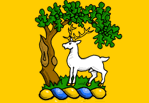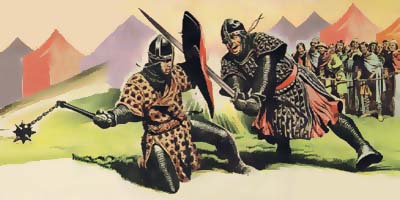 |
 |
|||
|
Trial by Combat at Reading Fight [Almost] to the Death
Here, then, one day in April, 1163, a great concourse of people assembled. The King himself was there, and with him many of his nobles. Essex and Montfort were ferried over to the island, and were bidden to fight out their quarrel. Let God judge between them! After a furious fight, during which Robert of Montfort "thundered on him manfully with hard and frequent strokes," Henry of Essex fell, wounded, as was thought, to death. The King turned to the monks of Reading, and bade them carry away the body of the traitor and bury it. But the monks found that Henry of Essex was not dead. Under their care he at length recovered from his wounds. Yet because he was now held to be a coward and a traitor to the King his estates were taken from him. Nor could he bear the gaze of men for shame. And so he stayed on with the kindly monks, and became a monk himself. Thus he who had been the standard-bearer of Henry Plantagenet passed from the eyes of the world, and ended his life a forgotten monk within the walls of Reading Abbey. In after days Henry of Essex used to say that he had been defeated because, at the height of the combat, the figures of St. Edmund the Martyr, and of a certain knight, both of whom he had formerly wronged, appeared to frown upon him in a terrifying manner "on the border of the land and the water." Edited from W.M. Childs' "The Story of the Town of Reading" (1905)
|
|||
| © Nash Ford Publishing 2003. All Rights Reserved. | ||||






 In
1163, a notable duel took place at
In
1163, a notable duel took place at